In the contemporary landscape of dentistry, certain procedures serve as fundamental pillars of restorative care. Crown and bridge dentistry, a practice aimed at replacing damaged or missing teeth, has long been pivotal in enhancing both oral function and aesthetics. Traditionally, crafting dental crowns and bridges has relied on labor-intensive techniques, often entailing manual molding and casting. However, a transformative wave has swept over this field, ushering in novel possibilities and unprecedented precision through the intersection of crown and bridge techniques with 3D printing and digitalization.
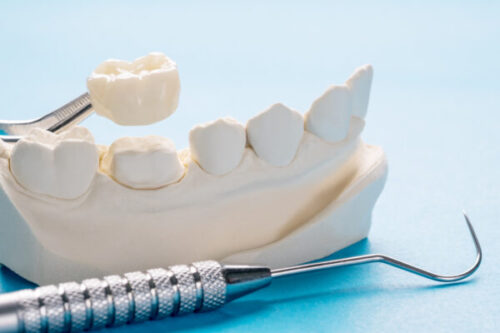
1. UNDERSTANDING DENTAL RESTORATION
Dental restoration stands as a crucial aspect of oral healthcare, with the goal of replacing damaged or missing teeth using prosthetic devices like crowns and bridges.
- Crown Dentistry:
A dental crown, often referred to as a dental cap, is a customized prosthetic covering that encases a damaged, weakened, or aesthetically compromised tooth. Crowns are designed to restore the tooth’s strength, shape, and appearance, providing protection and improving its overall function. They can be made from various materials, including composite, metal alloys, and ceramic compounds, each with its own set of advantages and considerations.
- Bridge Dentistry:
A dental bridge is a prosthetic appliance used to replace one or more missing teeth by bridging the gap between adjacent natural teeth. The bridge consists of one or more artificial teeth, known as pontics, which are anchored to the neighboring teeth or dental implants. Dental bridges serve to restore both aesthetics and function, preventing the shifting of remaining teeth and maintaining proper bite alignment.
2. CHALLENGE OF TRADITIONNAL METHODS
Traditional methods in crown and bridge dentistry have long been effective in restoring appearance, comfort and oral functionality. However, they have not been without their limitations. One of the first limitations are inconsistencies in sizing and fit, which can result in discomfort for patients and compromise the longevity of restorations.
Indeed, traditional methods do not offer the opportunity to verify or correct errors that may arise during the process of taking molds. These errors can include excessive compression, lack of moisture control, incorrect extensions of the borders, excessive pressure on the supporting surfaces, inaccurate dimensional assessment, and improper centering of the impression tray. Additionally, factors such as incorrect material viscosity during insertion into the mouth and excessive material during the loading of the impression tray can contribute to inaccuracies.
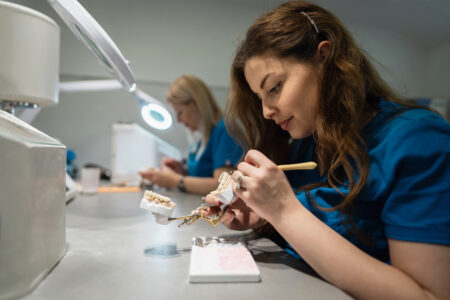
Moreover, the conventional impression process involves a series of sequential steps that follow the initial surface impression. These subsequent steps, including casting and model preparation using additional materials like plaster, are susceptible to introducing cumulative errors. These errors can accumulate and lead to larger discrepancies in the final adaptation of the prosthesis or restoration. As a result, the final restorations might require multiple adjustments, leading to prolonged treatment times and increased patient frustration.
The introduction of 3D printing has revolutionized this domain, streamlining procedures and enhancing outcomes.
3. 3D PRINTING AND DIGITALIZATION
The introduction of 3D printing technology into the realm of crown and bridge dentistry, thanks to 3d printed models has brought with it a promising solution to traditional method challenges. 3D printing, also known as additive manufacturing, enables the creation of three-dimensional objects from digital designs by layering material upon the material. This revolutionary approach empowers dental professionals to craft precise and customized restorations with unparalleled accuracy.
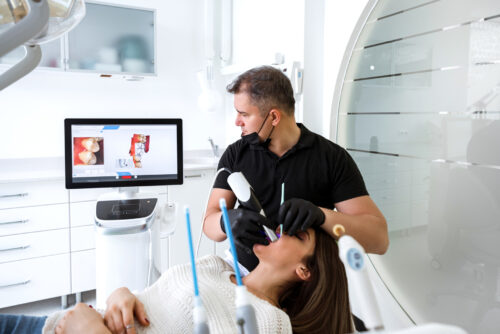
Digital Impressions and Intraoral Scanners
Central to the success of 3D printing in dentistry is the shift from traditional molds to digital impressions, with CAD/CAM (Computer-Aided Design and Manufacturing) playing a pivotal role. Intraoral scanners, a cornerstone of digitalization, have become essential tools in this transition. These compact devices also utilize advanced imaging technologies to capture detailed, high-resolution scans of the oral cavity. The discomfort associated with traditional impressions is eliminated, as patients experience a non-invasive and streamlined process.
Moreover, digital impressions provide real-time visualization, enabling both the dental practitioner and the patient to promptly evaluate the scan’s quality, ensuring precision before moving forward. These impressions could serve as a tangible communication tool for patients, helping them grasp and give consent to dental treatments. This tool provides a clear comprehension of their oral health condition, thereby enhancing the patient-practitioner relationship and fostering better treatment decisions. The integration of CAD/CAM technology further empowers dental professionals to seamlessly translate these digital impressions into precise, patient-specific restorations, revolutionizing the field of dentistry.
Traditional Fingerprinting and Digital Fingerprinting: A Comparative Overview
Advantages of 3D-Printed Dental Restorations
- Enhanced Precision
Traditional methods often involve manual casting and molding, resulting in minor discrepancies in the final product. 3D printing eliminates this variability by translating digital scans directly into physical restorations, ensuring a precise fit and optimal functionality.
- Reduced Turnaround Time
Conventional dental restoration techniques can be time-consuming, requiring multiple visits and weeks of waiting. With 3D printing, the process is expedited. Dental laboratories can swiftly produce prosthetics, reducing the overall treatment timeline and enhancing patient satisfaction.
Practitioners will save costs from fittings, prosthetic adjustments, and plaster, making the process more efficient. It also reduces logistical demands for the lab, which can directly receive the impression as an STL file before printing and proceed with work on the crown.
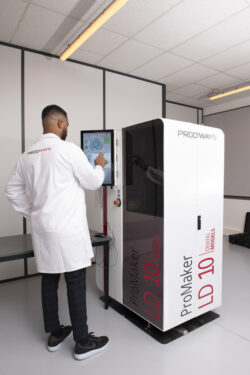
- Customization and Comfort
Each patient’s oral anatomy is unique. 3D printing enables the customization of dental restorations that seamlessly and comfortably integrate into the mouth. This tailored approach not only improves aesthetics but also ensures superior comfort and functionality.
- Cost-Effectiveness:
Starting with 3D printing might need a big investment at first. However, the advantages that unfold over the long run frequently surpass the associated expenses. The diminished requirement for manual labor, the accelerated production timelines, and the minimization of material wastage collectively contribute to substantial cost reductions over an extended period. As a result, 3D printing emerges as a financially sustainable and viable solution.
- Complex Geometry:
In some dental situations, there are tricky and complicated shapes that can be challenging to make using regular techniques. But with 3D printing, these tricky shapes can be made easily. It’s really good at creating these hard designs, making sure the finished dental work looks just like the digital plan.
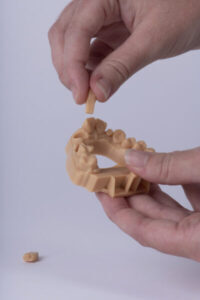
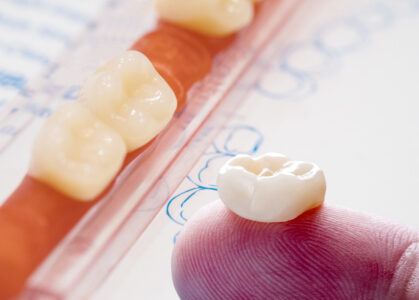
4. CHALLENGE AND FUTURE OUTLOOK
While 3D printing offers remarkable benefits, it’s essential to acknowledge the challenges that come with adopting new technologies. Initial setup costs and the need for specialized training can pose obstacles for some dental practices. However, as technology becomes more widespread, these barriers are likely to diminish.
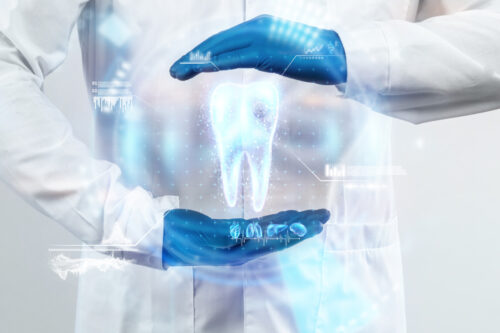
The quality of impressions in dentistry is intricately linked to the performance of the intraoral scanner employed. Factors such as the scanner’s precision, speed, and ease of use significantly influence the overall quality of the impressions obtained. The proficiency of dental professionals in effectively operating the scanner also plays a pivotal role in this process.
Modern intraoral scanners have evolved to offer advanced features that enhance the accuracy and efficiency of impression-taking. The precision of the scanner’s optical sensors, its ability to capture fine details, and the fidelity of the digital models it generates are all vital aspects that contribute to the quality of the impressions.
Moreover, the time required for dental professionals to become proficient in using the intraoral scanner is a critical factor. Adequate training and familiarity with the scanner’s functionalities enable practitioners to achieve consistent and reliable results. The learning curve associated with mastering the scanner should not be underestimated, as it directly impacts the accuracy of the impressions and subsequent restorative work.
In essence, the quality of impressions relies heavily on the capabilities of the chosen intraoral scanner, as well as the expertise of the dental team using it. Investing in high-quality scanners and providing comprehensive training for dental professionals are key steps in ensuring the utmost precision and success in restorative dentistry procedures.
Looking ahead, the future of 3D printing in dental restoration holds immense promise. Ongoing research aims to unlock the possibilities of utilizing cutting-edge materials, opening the door to crafting restorations that are not only long-lasting but also remarkably appealing in appearance. Moreover, the fusion of artificial intelligence and 3D printing stands as a beacon of hope, holding the promise of elevating precision and treatment strategizing to new heights of excellence.
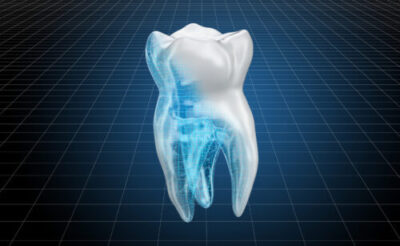
CONCLUSION : PAVING THE FUTURE OF DENTAL CARE
Within dentistry, the synergy between crown and bridge procedures and 3D printing marks a pivotal advancement. As digitalization drives precision and efficiency, the future holds the promise of superior dental prosthetics. This translates not only to healthier smiles but also to elevated patient satisfaction. As we stand at the crossroads of tradition and innovation, one thing is certain: the future of crown and bridge dentistry shines brighter than ever before.
Contact our experts to discuss on your 3D printing project

